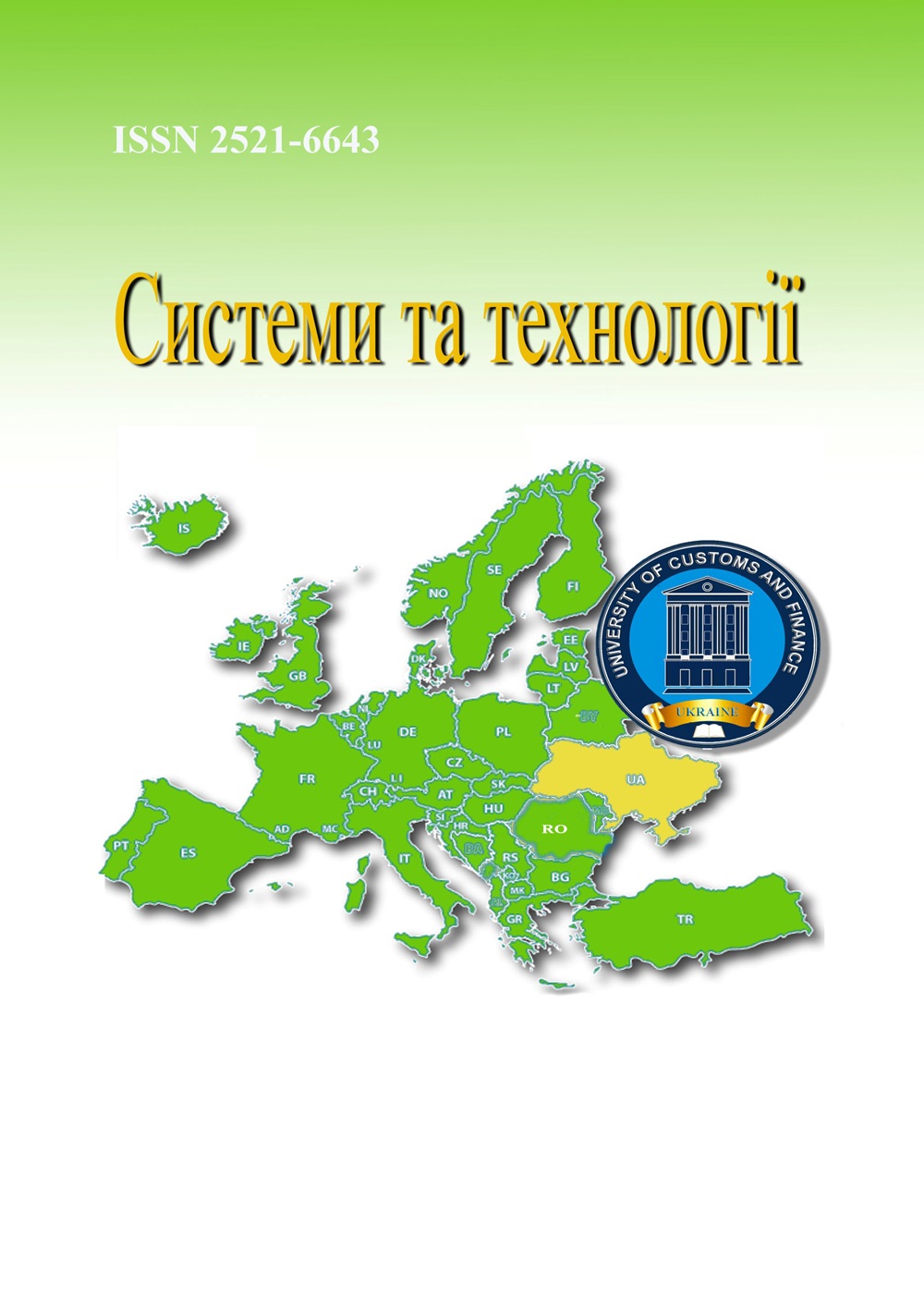INTERMODAL TRANSPORTATION: COMPOSITION OPTIONS AND THE IMPORTANCE OF MARITIME TRANSPORT
Abstract
The paper examines the definition of “door-to-door” in relation to intermodal transportation and considers its author's interpretations. The definition of intermodal transportation as a type of multimodal transportation is considered, its features are established in accordance with Ukrainian legislation. The starting and ending points that form intermodal transportation are identified and the conditions of intermodality are listed. Identification of the beginning and end of intermodal transportation is important in terms of establishing the locations where the intermodal transportation operator assumes and disclaims liability for the cargo. To prove the groundlessness of the statements about door-to-door delivery as a sign of intermodal transportation, the author presents technological maps of intermodal delivery under CIF and FOB contracts, which may be intermodal, but do not connect the door of the sender's warehouse with the door of the consignee. These examples illustrate the boundaries of intermodal transportation under the responsibility of the operator and areas where transportation takes place outside the operator's boundaries and is not the responsibility of the operator. Such a distinction establishes different statuses for these two carriers and, as a result, different levels of liability for loss and damage, and delay of cargo. The study is based on the definition of inter-modal transportation in accordance with national legislation, as well as the author's formulations of this definition provided by Ukrainian and foreign scholars in their publications. As a result, the following conclusions have been established: the key factor in transforming conventional segmented transportation into intermodal transportation is not just the use of several modes of transport, but rather their interaction, which provides a connection between land and sea sections of the route. Therefore, the participation of maritime transport is an integral part of the transport support for international trade. Intermodal transportation does not necessarily cover the entire route “from the sender's door to the recipient's door”. – It may begin or end at other points along the route in accordance with the selected basic terms of delivery, provided that certain “intermodality” features are main-tained. Under any conditions of supply of goods, each intermodal transportation is managed by a single intermodal transport operator, which issues a through transport document that ensures communication between the consignor and the consignee.
References
2. Дрожжин О. Л. Інтермодальні перевезення. Суми: Університетська книга, 2024. 166 с.
3. Полякова О. М. Формування інтермодальної транспортної системи в Україні на базі вантажних транспортно-розподільчих комплексів: дис. канд. екном. наук : 08.07.04. Харків, 2019. 171 с.
4. Орда О. О. Формування стратегій організації інтермодальних контейнерних перевезень в ланцюгах постачань на принципах кооперації учасників: дис. канд. техн. наук : 05.22.01. Харків, 2005. 188 с.
5. Орда О. О. Методологія оцінювання синергетичного ефекту при організації інтермодальних контейнерних перевезень в ланцюгах постачань на принципах кооперації учасників. Вісник машинобудування та транспорту. 2017. Вип. 2(6). С. 110–116.
6. Шраменко Н. Ю., Орда О. О. Оцінка ефективності взаємодії учасників інтермодальної доставки вантажів як пріоритетного напрямку розвитку транспортно-дорожнього комплексу України. Проблеми і перспективи розвитку транспорту» в рамках «ODESSA SMART FORUM: тези доповідей V всеукраїнської науково-практичної конференції студентів та молодих вчених. Одеса: ОНМУ, 2016. С. 57–60.
7. Шраменко Н. Ю. Формалізація процесу взаємодії суб’єктів транспортного ринку при інтермодальних контейнерних перевезеннях. Сучасні технології в машинобудуванні та транспорті. – 2016. – № 2. – С. 167-174.
8. Нагорний Є. В., Орда О.О. Алгоритм формування раціональних стратегій транспортно-експедиторських підприємств при взаємодії з суб’єктами транспортного ринку на умовах кооперації. Проблеми з транспортними потоками і напрями їх розв’язання: тези доповідей ІІ Всеукраїнської науково-теоретичної конференції. Львів: Видавництво Львівської політехніки, 16–18 березня 2017 р. С. 76–77.
9. Коскіна Ю. О., Дрожжин О. Л. Дослідження обробки інтермодальних транспортних одиниць в концепції «single window». Збірник наукових праць Державного університету інфраструктури та технологій Міністерства освіти і науки України: Серія «Транспортні системи і технології». Вип. 40. К.: ДУІТ. 2022. С. 227-236.
10. Naumov V., Nagornyi I., & Litvinova Y. Model of multimodal transport node functioning. Archives of Transport. 2015. № 36. P. 43-54.
11. Пасічник В. І. Ефективність інтермодальних перевезень як елемент забезпечення високої якості транспортних послуг. Управління проектами, системний аналіз і логістика. Технічна серія. 2013. № 12. С. 125-131.
12. Малахова О. А. Проблеми розвитку міжнародної транспортної системи в умовах удосконалення інтермодальних перевезень. Вісник Нац. техн. університету "ХПІ": Збірник наукових праць. Серія: Нові рішення в сучасних технологіях. – Харьков : НТУ "ХПИ". 2009. № 8. С. 48-51.
13. Пашинська Н.М. Сучасні особливості територіальної організації транспортної системи. Проблеми суспільної географії : Зб. наук. пр. – К.: Інститут географії НАН України. 2010. № 1. С. 36-40.
14. Соколова О. Є. Концептуальні засади формування мультимодальної системи перевезення вантажів. Наукоємні технології. 2017. № 4. С. 114 – 118.
15. Кухарчик О. Г. Ринок мультимодальних перевезень регіону та стратегія його розвитку. дис. … канд. економ. наук: 08.00.05. Херсон, 2019. 213 с.
16. Shipping glossary of terms. DCSA (Digital Container Shipping Association) https://dcsa.org/standards/shipping-glossary (date of access: 20.02.2025).
17. Dictionary of International Trade / ed. by Hinkelman, E. G. Brno: Tribun EU. 2008. 688 p.
18. Tyan, J. C. Using collaborative transportation management in global supply chain. Encyclopedia of E-Commerce, E-Government, and Mobile Commerce. / ed. by M. Khosrow-Pour. 2006. P. 1126-1132.
19. Glossary of shipping terms. A.P. Moller – Maersk. https://www.maersk.com/ru-ru/support/glossaries/shipping-terms (date of access: 20.02.2025).
20. Crainic, T. G., & Kim, K. H. Intermodal transportation. Transportation. 2007. No. 14, P. 467–537. URL: https://doi.org/10.1016/S0927-0507(06)14008-6 (date of access: 20.02.2024).
21. Кириллова О. В. Теоретичні основи управління роботою флоту у транспортно-технологічних системах : дис. … д-ра техн. наук : 05.22.01. Одеса, 2017. 470 с.
22. Glossary of shipping terms.U.S. Department of Transportation, Maritime Administration. URL: https://surl.li/vnyixj (date of access: 20.02.2024).
23. U.S. Congress. Committee on Interstate and Foreign Commerce. Intermodal transportation: Hearings, Ninety-second Congress, second session. 1972. San Francisco: U.S. Government Printing Office. p. 199.
24. National Academies of Sciences, Engineering, and Medicine. Intermodal marine container transportation: Impediments and opportunities. 1992. The National Academies Press. p. 138. URL: https://doi.org/10.17226/11404 (date of access: 20.02.2024).
25. Brodie, P. Commercial shipping handbook (2nd ed.). London: Informa Law from Routledge, 2006. p. 368. DOI: 10.4324/9781315832685

 ISSN
ISSN 




